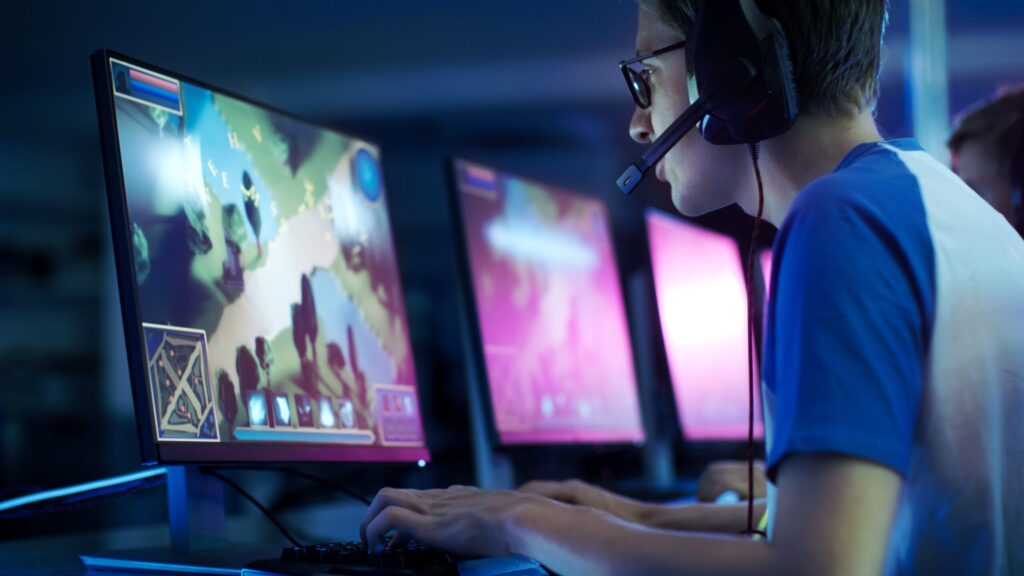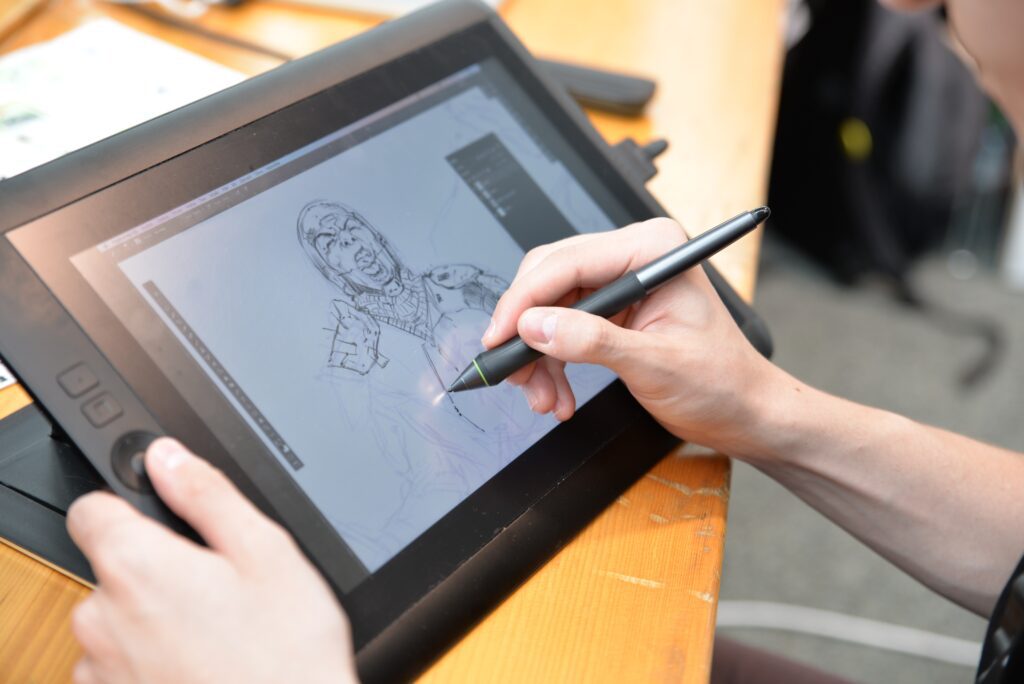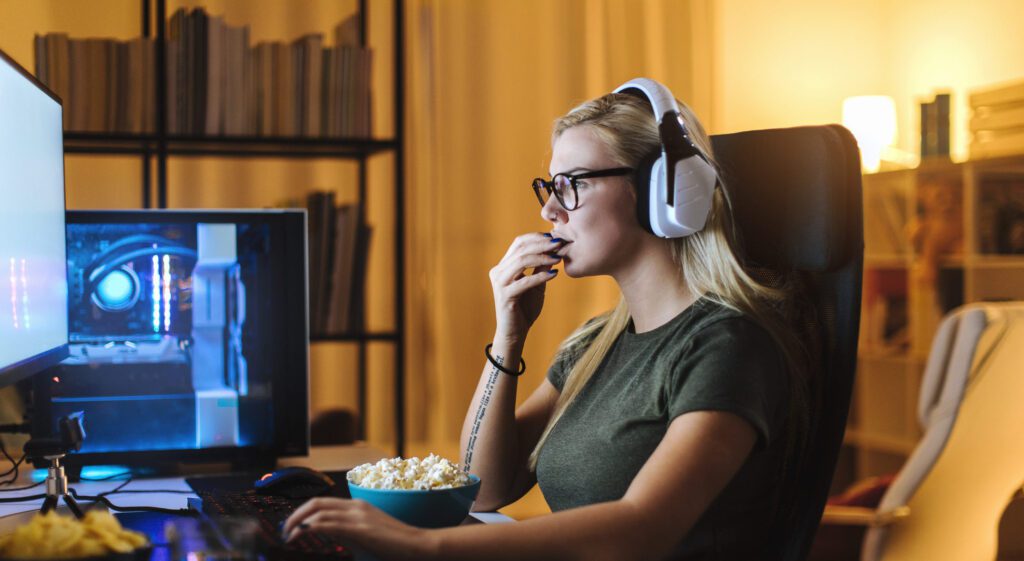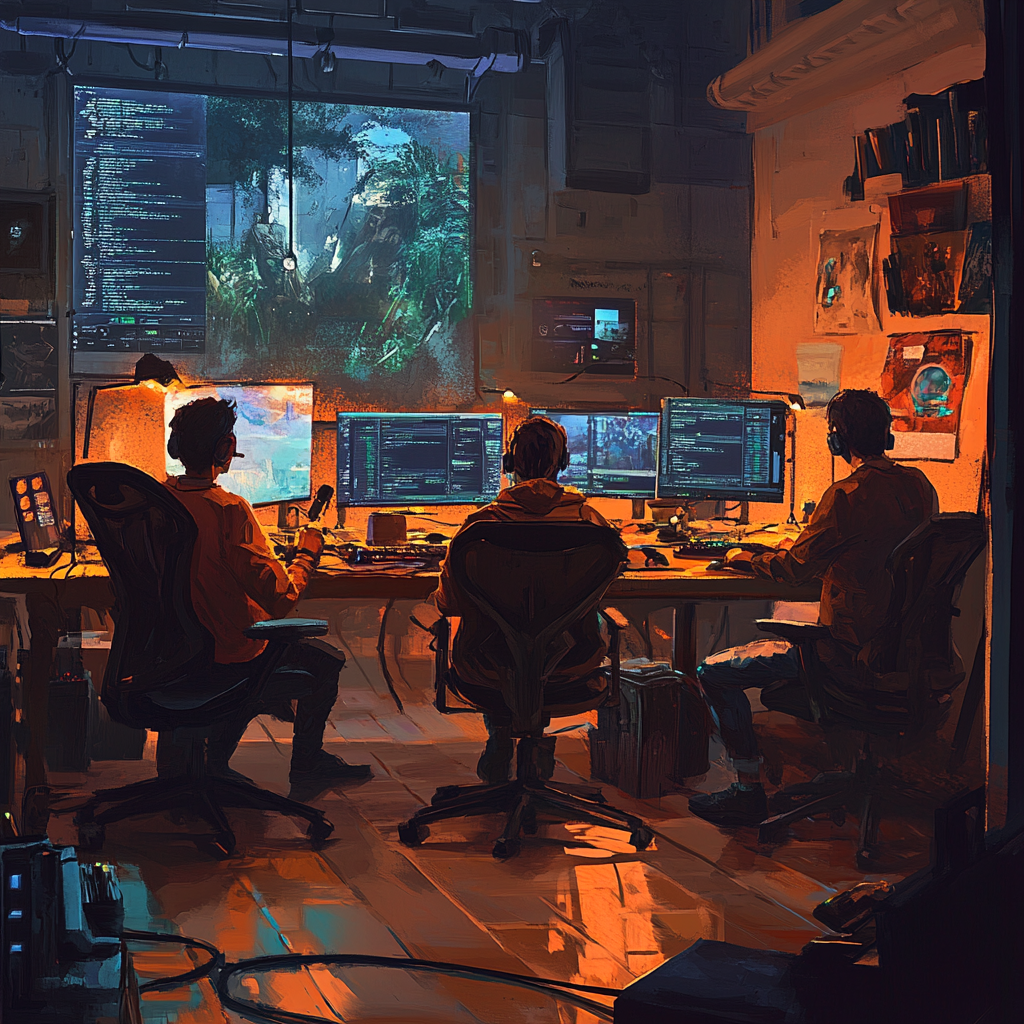Creating a video game is a complex, collaborative effort that requires a diverse group of professionals, each contributing their expertise to bring a digital world to life. The roles in a game development team are carefully structured to ensure every aspect of the game – from its mechanics to its visuals – is polished and engaging all the way through. Whether working on indie projects or AAA titles, understanding these responsibilities is essential for anyone looking to enter the industry or collaborate with a development studio.
In this article, we will explore every major position within a game development team, explaining their importance in contributing to the final product. By the end, you will have a clear picture of how these roles work together, ensuring smooth production and high-quality results for the public.
Don’t miss: Is it hard to make a game? A look at game development
5 core roles in a game development team
Every successful game development studio relies on a well-organized structure where each professional plays a critical part. Below, we break down the primary roles of a game development team, highlighting their contributions and overall importance for the final product.
1. Game designers – the visionaries

Game designers are the creative masterminds who shape the very essence of a video game. They are responsible for crafting the rules, mechanics, and overall player experience, ensuring that a game is not only functional but also deeply engaging.
While artists bring visuals to life and programmers make interactions possible, game designers define what the game actually is: its core identity, challenges, and rewards. Within this role, there are a few specializations:
Lead designer (the big-picture strategist)
- Acts as the creative director for gameplay.
- Ensures all design elements align with the game’s vision.
- Makes high-level decisions about core mechanics and player experience.
Level designer (the world builder)
- Crafts individual stages, dungeons, or open-world zones.
- Places enemies, obstacles, and rewards to create pacing.
- Ensures levels teach mechanics naturally (e.g., tutorial zones).
Systems designer (the rule maker)
- Designs underlying systems like combat, crafting, or economies.
- Balances numbers (damage values, currency, stat growth).
- Works closely with programmers to implement mechanics.
Narrative designer (the story integrator)
- Bridges gameplay and storytelling.
- Designs quests, dialogue trees, and lore delivery.
- Ensures the plot enhances – not interrupts – gameplay.
Without strong game designers, even the most visually stunning game can fall flat, proving how vital this role is in a game development team.
2. Programmers – the engineers of interaction

Game programmers serve as the backbone of development, transforming creative visions into functional, interactive realities. While designers imagine the gameplay and artists craft the visuals, programmers write the code that makes everything work seamlessly together. Their expertise bridges imagination and execution, ensuring players experience fluid controls, responsive mechanics, and immersive worlds.
Programmers don’t just “write code”, they solve complex technical challenges to bring games to life. Their responsibilities include:
- Implementing game mechanics: translating design documents into functional systems (movement, combat, AI behavior).
- Optimizing performance: ensuring the game runs smoothly across different hardware and platforms.
- Debugging & problem-solving: identifying and fixing issues that affect gameplay or stability.
- Collaborating across disciplines: working with artists, designers, and sound engineers to integrate assets properly.
Without skilled programmers, even the most brilliant game concept would remain just an idea!
3. Artists – the visual storytellers

Game artists are the creative force behind a title’s visual identity, transforming abstract concepts into breathtaking digital realities. They don’t just create assets – they build cohesive universes that players believe in and want to explore.
From the subtle weathering on a dungeon wall to the fluid motion of a character’s cape, artists infuse games with personality and depth through meticulous craftsmanship. The artistic roles in a game development team include:
1. Concept artists (the visual pioneers)
These visionaries establish the game’s fundamental aesthetic through:
- Character and creature designs that communicate personality at a glance
- Environment paintings that define mood and storytelling
- Prop and vehicle concepts that fit the game’s technological era
- Style guides that ensure visual cohesion across the project
2. 3D modelers (the digital sculptors)
Modelers translate 2D concepts into game-ready assets by:
- Creating optimized topology that deforms correctly during animation
- Establishing proper scale hierarchies for immersive worlds
- Implementing modular systems for efficient environment construction
- Preparing assets for rigging and animation pipelines
3. Texture artists (the surface magicians)
These specialists bring models to life through:
- Physically-based materials that react realistically to lighting
- Custom shader creation for unique visual effects
- Procedural texturing techniques for large-scale environments
- Hand-painted details that add character and storytelling
4. Animators (the illusion of life)
Animators create believable motion through:
- Character locomotion systems that feel natural and responsive
- Facial animation that conveys emotion and personality
- Combat and interaction sequences with proper weight and impact
- Cinematic sequences that advance narrative effectively
5. Technical artists (the pipeline optimizers)
These hybrid specialists bridge art and programming by:
- Developing shaders and VFX systems
- Creating art tools and scripts to streamline workflows
- Optimizing rendering performance without visual compromise
- Solving complex visual-tech challenges like hair or cloth simulation
4. Sound designers and composers – the auditory architects

While players may not consciously notice exceptional audio work, they would immediately feel its absence. Sound designers and composers don’t just add noise – they create an auditory landscape that subconsciously guides emotions, reinforces gameplay feedback, and breathes life into digital worlds.
Sound designers and composers enhance immersion through:
- Sound effects: creating footsteps, gunshots, and ambient noises.
- Voice acting: directing and implementing character dialogue.
- Music composition: crafting scores that set the game’s tone.
These roles in a game development team ensure that players feel fully immersed in the game’s universe.
5. Writers – the narrative crafters

Last but not least, game writers don’t just craft dialogue – they design narrative systems that react to player choices, build worlds that feel alive, and weave stories that unfold through gameplay, not just cutscenes. It plays out exactly like a movie: in the sense that a compelling story can elevate a game from good to unforgettable. Writers develop, for instance:
- Dialogue: ensuring characters feel authentic.
- Lore and worldbuilding: creating rich backstories and settings.
- Quest design: structuring engaging missions and narratives.
What makes game writing unique?
Unlike books or films, game writing must account for:
- Player agency: the story must adapt to choices while maintaining cohesion
- Environmental storytelling: lore hidden in item descriptions, background details, and level design
- Non-linear structure: branching paths that remain satisfying no matter the route
- Gameplay integration: a narrative that enhances, rather than interrupts, the play experience
What about the supporting roles in a game development team?
Beyond the core creative positions, several supporting roles ensure smooth production and delivery while producing a game! These include producers, game testers, and marketing specialists, who all act behind the curtains to shape the product into the public’s acceptance.
Producers – the project managers
Producers oversee timelines, budgets, and team coordination. They ensure that development stays on track, making critical decisions to avoid delays.
Quality assurance (qa) testers – the bug hunters
QA testers rigorously play the game to identify glitches, balancing issues, and inconsistencies. Their feedback is essential before launch.
Marketing and PR specialists – the hype builders
These professionals promote the game, manage social media, and coordinate with the press to generate excitement.

Why these roles matter in the big picture
Recognizing all the different roles in a game development team helps studios like ours optimize collaboration, ensuring that every project meets high standards. And that’s no different for you: whether you’re an aspiring developer or a publisher looking for a reliable partner, knowing what these people do ensures better communication and smoother workflows within a company you might work with in the future.
And speaking of companies, at Main Leaf, from programming and design to sound and marketing, we pride ourselves on delivering polished, engaging games that stand out in the competitive market. If you’re looking for a dedicated partner to bring your game vision to life, contact us today and let’s create something extraordinary together!

